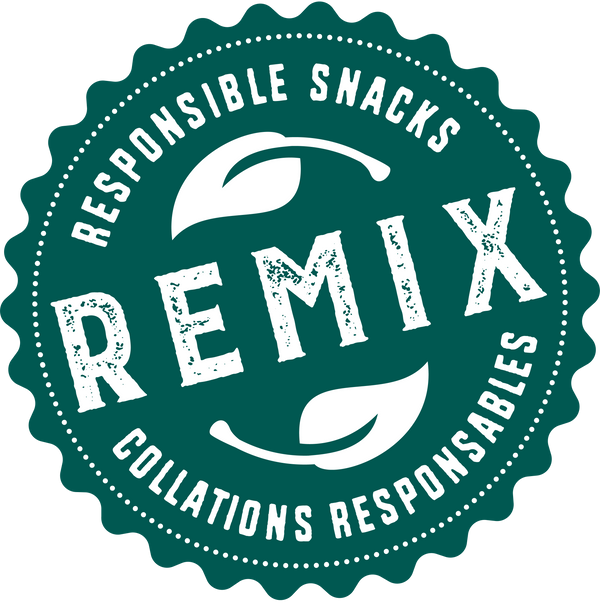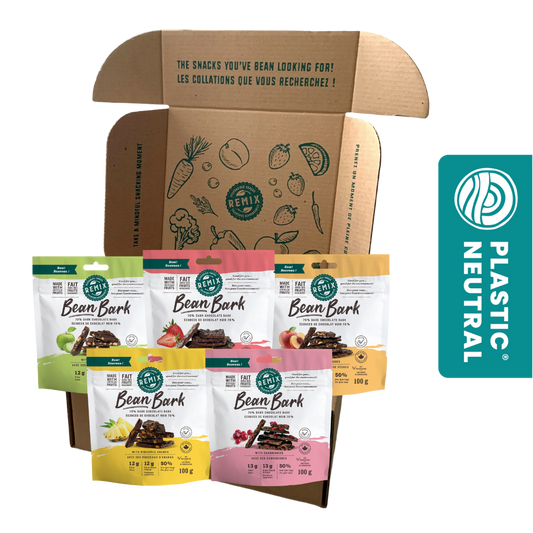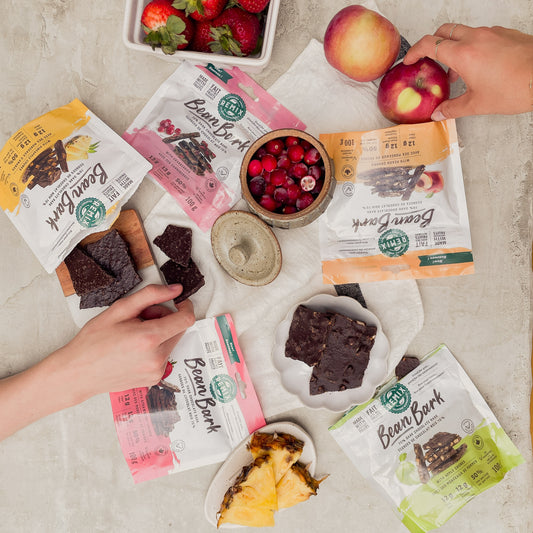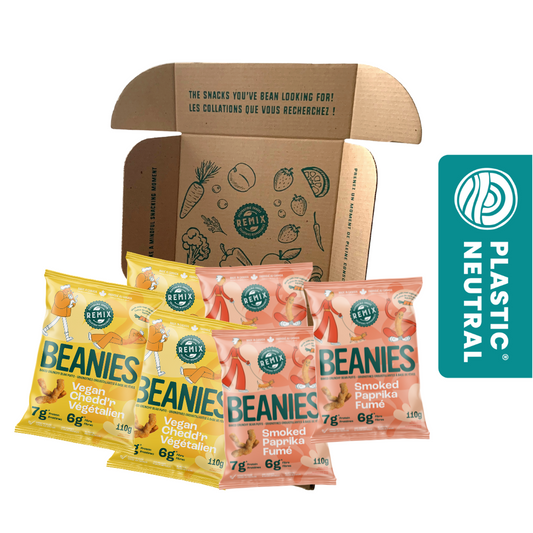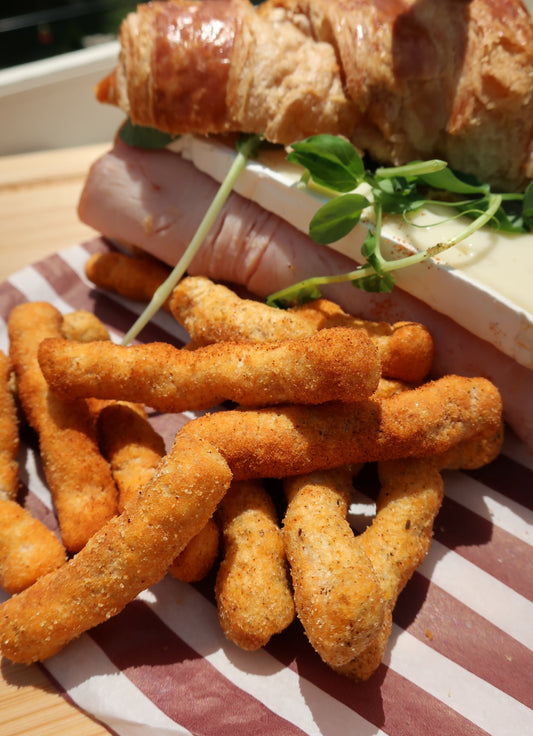Written by: Aviva Rappaport , Jan 2022
Why is iron important?
Iron is a mineral that is found in foods, and it is essential for our health. In our bodies, iron has the important role of transporting oxygen from the lungs to the rest of the body (National Institutes of Health, 2021). Without iron, we will become tired more quickly, and be less able to fight off infection. In children, iron is required for proper growth and cognitive development (Otten et al., 2006).
How much iron do we need in a day?
According to Health Canada, your iron requirements will depend on your age and sex and can change over the lifespan. For example, pregnant women and lactating women have different iron requirements than other women of reproductive age. Men and women need approximately 8 and 18 mg of iron per day, respectively. If you’re curious what your iron requirements are check out this simple chart below!
|
Male |
Female |
Pregnant |
Lactating |
|
|
9-13 years |
8 mg/d |
8 mg/d |
27 mg/d |
10 mg/d |
|
14-18 years |
11 mg/d |
16 mg/d |
27 mg/d |
9 mg/d |
|
19-30 years |
8 mg/d |
18 mg/d |
27 mg/d |
9 mg/d |
|
31-50 years |
8 mg/d |
18 mg/d |
||
|
51-70 |
8 mg/d |
8 mg/d |
||
|
>70 |
8 mg/d |
8 mg/d |
Table data from Health Canada Dietary Reference Intakes
What happens when we don’t get enough iron?
When dietary intake of iron is low, iron deficiency can occur. It is more common during periods of rapid growth ( because of higher requirements, including during childhood, adolescence, and pregnancy (De Benoist et al., 2008). In non-pregnant women of reproductive age, blood loss during menstruation is a major factor leading to iron deficiency. Iron deficiency can also occur when dietary iron intake is low, such as in vegetarians. Poor absorption is another cause of iron deficiency.
Did you know that vegetarians need about 1.8 times more iron than non-vegetarians (Otten et al., 2006).
Where can we find Iron?
There are two types of iron in the diet. Heme iron and non-heme iron. Heme iron is found in animal products such as seafood (ex. mussels), meat (ex. beef), and poultry (ex. turkey) (Government of Canada, 2019a; Healthwise Staff, 2020). Non-heme iron is found in vegetables (ex. spinach), legumes (ex. beans), cocoa, and in fortified grain products (ex. oatmeal) (Government of Canada, 2019a; Healthwise Staff, 2020).
Heme iron food examples:

Photos by RODNAE Productions, Malidate Van, and RODNAE Productions from Pexels
Non-heme iron food examples:

Photos by Rodolfo Quirós, cottonbro, Diego Concepción, and Taryn Elliot from Pexels
Heme iron is well absorbed in the body and is not impacted by dietary factors. Contrary, non-heme iron is not as well absorbed. The absorption of non-heme iron is dependent on iron enhancers and inhibitors.
Iron absorption inhibitors limit the amount of non-heme iron absorbed. A few examples include:
- Phytates: found in legumes (beans, lentils), unrefined grains and rice
- Tannins: Found in coffee, tea, and red wine
- Oxalates: found in chocolate, tea, and dark green vegetables
- Minerals: Such as calcium found in dairy products or taking a supplement with zinc, manganese and/or copper (Alberta Health Services, 2018).
Iron absorption enhancers increase the amount of non-heme iron absorbed. A few examples include:
- Foods with vitamin C such as:
- Green vegetables (broccoli, kale)
- Citrus (orange, grapefruit, lemon)
- Berries (strawberries)
- Bell peppers (Government of Canada, 2019b).
- Foods with heme iron: meat, fish, or poultry (Alberta Health Services, 2018).
Another simple tool to increase your daily iron intake is cooking in cast-iron cookware. Cooking with cast-iron may be more effective than taking iron supplements or changing your diet, as it requires little behaviour change. Similar to cast iron cookware is the Lucky Iron Fish ®. The Lucky Iron Fish® is a product that is sold and marketed as an easy way to increase dietary intake. However, research shows that the Lucky Iron Fish® may not have an impact on iron levels in the body and the long-term effects of the safety of it have yet to be examined (Rappaport & Green, 2020; Rappaport et al., 2017).
Increasing the amount of iron in your snacks could help you reach your daily iron requirements. Did you know that one serving of Remix Snacks Bean Bark contains 20% of your estimated daily iron requirements? The iron in bean bark comes from the cocoa, and black beans! According to Health Canada 20% of your estimated daily iron requirements is considered to be a lot of iron in a single serving.
But is the non-heme iron in Bean Bark properly absorbed even if there are inhibitors present?
You’re right, inhibitors present in Bean Bark such as phytates, and oxalates may decrease the amount of iron you absorb. Keep in mind that you can maximize the amount of iron you absorb from Bean Bark by pairing it with iron absorption enhancers. For example, eating your Bbean Bbark with an orange, grapefruit, or some strawberries will allow you to absorb more iron. Having Bean Bark as a snack after a meal that contains meat, fish, or poultry will also enhance the absorption. If you are looking to maximize the amount of iron absorbed from Bean Bark, be aware of other factors that may inhibit iron absorption. Enjoying your mid-afternoon Bean Bark with a cup of coffee, tea, or red wine will decrease the amount of iron you absorb.
To summarize, iron is an essential mineral in our bodies. Iron can be found in heme or non-heme form. Heme iron is easily absorbed. Non-heme iron absorption depends on whether enhancers or inhibitors are consumed with the non-heme iron source. Non-heme iron is absorbed more readily if it is eaten with citrus fruits, or foods with heme iron (meat, fish, or poultry). If you’re trying to increase your daily iron intake from food, try including iron rich snacks into your diet such as Bean Bark or cooking your meals in a cast-iron pot.
References
Alberta Health Services. (2018). Nutrition Guideline: Iron. https://www.albertahealthservices.ca/assets/info/nutrition/if-nfs-ng-iron.pdf
De Benoist, B., Cogswell, M., Egli, I., & McLean, E. (2008). Worldwide prevalence of anaemia 1993-2005; WHO global database of anaemia.
Government of Canada. (2019a). Iron. Health Canada. https://www.canada.ca/en/health-canada/services/nutrients/iron.html
Government of Canada. (2019b). Vitamin C. Health Canada. https://www.canada.ca/en/health-canada/services/nutrients/vitamin-c.html
Government of Canada. 2006. Dietary Reference Intakes. Health Canada. https://www.canada.ca/en/health-canada/services/food-nutrition/healthy-eating/dietary-reference-intakes/tables/reference-values-elements-dietary-reference-intakes-tables-2005.html
Healthwise Staff. (2020). Getting engouh Iron. HealthLink BC. https://www.healthlinkbc.ca/healthy-eating-physical-activity/food-and-nutrition/nutrients/getting-enough-iron
National Institutes of Health. (2021). Iron: Fact Sheet for Consumers. NIH Office of Dietary Supplements. https://ods.od.nih.gov/factsheets/Iron-Consumer/
Otten, J. J., Hellwig, J. P., & Meyers, L. D. (2006). DRI, dietary reference intakes : the essential guide to nutrient requirements. National Academies Press.
Rappaport, A., & Green, T. (2020). Metal Contaminants Leached by the Lucky Iron Fish When Boiled in Deionized Distilled Water. Current Developments in Nutrition, 4(Supplement_2), 269-269. https://doi.org/10.1093/cdn/nzaa043_120
Rappaport, A. I., Whitfield, K. C., Chapman, G. E., Yada, R. Y., Kheang, K. M., Louise, J., Summerlee, A. J., Armstrong, G. R., & Green, T. J. (2017). Randomized controlled trial assessing the efficacy of a reusable fish-shaped iron ingot to increase hemoglobin concentration in anemic, rural Cambodian women. The American Journal of Clinical Nutrition, 106(2), 667-674. https://doi.org/10.3945/ajcn.117.152785
